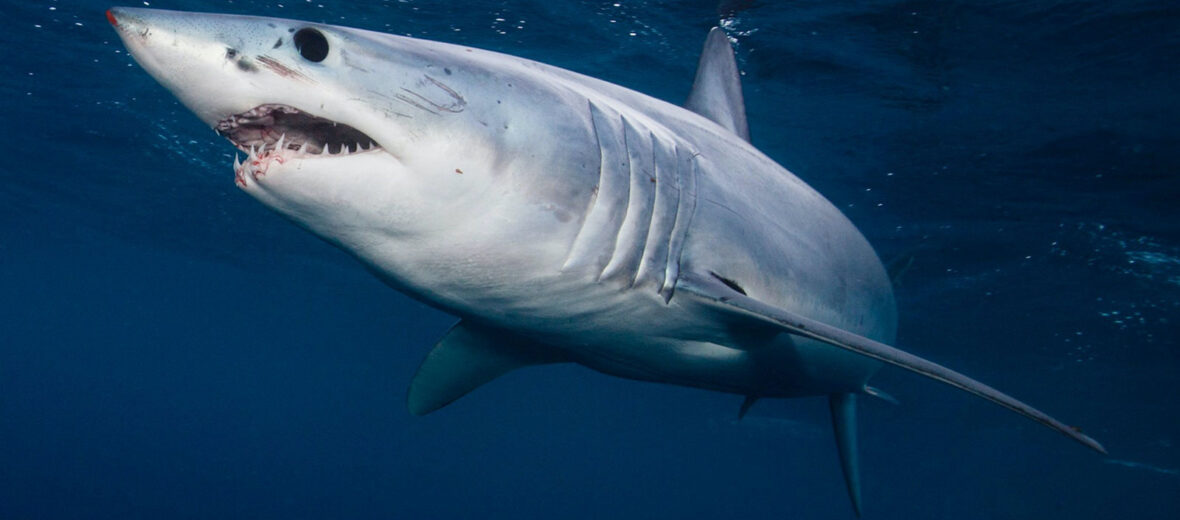
There are 2 known species of mako shark in the world: the longfin and the shortfin. These sharks are considered the fastest of all the ocean’s sharks. Makos can be found in tropical and subtropical waters and typically swim in deeper water. However, they have also been spotted in shallower water too. They are typically an equatorial based shark, not found in Arctic or Antarctic seas. The greatest threat to these cool sharks is humans. Due to over fishing, over collection for their meat, skin, fins, oil, and teeth, as well as being the victims of bycatch (getting caught in gill nets and long lines), these sharks are listed as Endangered by the IUCN.
First the Stats…
Scientific name: Isurus
Weight: Up to 400 lbs.
Length: Up to 14 feet
Lifespan: Up to 35 years
Now on to the Facts!
1.) The name mako comes from the Māori people of New Zealand and means shark tooth.
2.) Mako Sharks are 1 of only 5 species of endothermic (warm blooded) sharks.
3.) With the largest brain to body ratio of any shark, these predators have quite impressive social and critical reasoning skills, able to coordinate calculated attacks on prey. They tend to use these skills rather than rely on electroreception, like other sharks.
4.) They prey on tuna, billfish, blue sharks, mackerels, dolphins, squids, sea turtles, and porpoises.
5.) They are apex predators who’s only predator is humans.
But wait, there’s more on the mako shark!
6.) A group of sharks is called a school or a shoal.
7.) Like many other shark species, the mako is an obligate ram ventilator. This means that they have to keep swimming in order to get oxygenated water to rush over their gills. If they stop swimming they will drown.
Did you know…?
These sharks can reach speeds of up to 50 mph and can leap up to 20 feet from the water!
8.) Females birth up to 12 pups every year and a half.
9.) Mako shark pups engage in intra-uteral cannibalism and will eat the yolks, the undeveloped, and smaller sharks in mom’s womb.
10.) Makos typically hunt from below and swim upwards to attack their prey. They are able to remain mostly hidden due to their countershading style coloration. Dark on top and lighter on the bottom. This way, if you look down on them they remain hidden, if you are looking up, they blend in with the brighter surface water.
Now a Short Mako Shark Video!
Also, check out the Critter Science YouTube channel. Videos added frequently!
Want to suggest a critter for me to write about? Let me know here.



